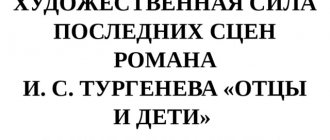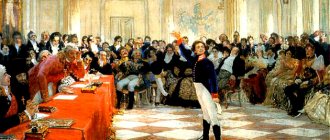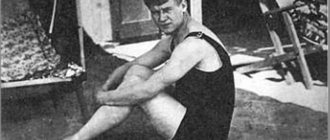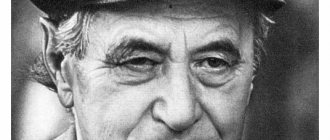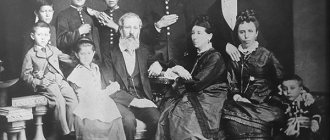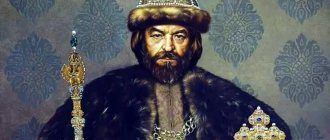- Poetry analysis
- Apukhtin
- Crazy
Alexey Nikolaevich Apukhtin is a famous poet; his poem “Crazy” was published in 1890.
The poem is written in a very unusual way, it consists of three parts, in the second of which the size of the verse changes sharply, it represents a happy memory of a sick person about the past.
The entire poem is written from the perspective of a mentally ill person who was placed in a mental hospital. According to the plot, his wife and her brother came to visit him, and his speech was addressed to them.
It is quite possible that the main character of the poem has schizophrenia. He suffers from hallucinations, which are replaced by “enlightenments”: he either takes his loved ones for honored guests, and himself as a king, then suddenly realizes who really came to him and remembers that he has a beloved daughter, remembers how good they lived before, before his illness.
In the first part of the poem, he meets his guests in the chamber in the role of a king, but there is not a drop of anger in his words, only fatigue: “I write laws day and night for the happiness of my subjects and I am very tired.” Then the faces of the guests begin to seem familiar to him, suddenly he remembers that it was his wife and her brother who came to visit him. He sees how worried his wife is, how haggard she is, and he feels sorry for her. A loving father misses his daughter and is sad that an evil hereditary disease has affected him too.
In the second part, the patient recalls how he, his wife and daughter walked through the field, collected cornflowers, played, and how good they were together. And now these flowers in his memory have acquired an ominous hue, they seem to laugh at him, they appear to him constantly, he cannot find salvation from his memories.
In the third, final part of the poem, he is again a king, but already embittered, he recognizes his loved ones, is dissatisfied with them, that they torment him with their presence, stir up his feelings, he is especially angry with his wife, he even wants to “execute” her, but calms down in time. In the end, he drives everyone away, saying that he wants to be alone.
This poem is very difficult to read and evokes bitter feelings. I feel sorry for the family suffering because of the father’s illness - the mother is very worried, the daughter practically does not see him. I feel incredibly sorry for the patient himself, he inherited mental illness, he was afraid of it since childhood, and now it has taken possession of him. And it is unlikely that he will recover and return to normal life. He values his memories, and at the same time they torment him, because the happiness is gone, nothing will happen anymore. He is unable to overcome the disease, and often retreats into some other world of royal fantasies, invented by himself. It’s scary to read and think about a person affected by such a disease that destroyed his happiness and left only painful memories of the past: cornflowers, cornflowers...
Analysis of the poem by V. Ya. Bryusov “Creativity”
V. Ya. Bryusov wrote his poem on March 1, 1895. This poem was included in his first collection of lyrics. Reading the poem “Creativity,” you involuntarily think: “Who could write these lines? A madman who belongs only in a psychiatric hospital.” Many of the author’s contemporaries thought so. Indeed, everything in the poem is unusual and does not fit into the framework of consciousness. “Violet hands” that “draw sounds”, “naked moon”, “sounds caress”. Nonsense, absurd! But if you look at the paintings of Marc Chagall, the cubic faces of Picasso, we will see that the art of that time itself was absurd, but not without meaning. All this is explained by the fact that the era of the turn of the century required new forms in art. It is also necessary to remember that Bryusov is the “father of Russian symbolism.” It was he who said that “symbolism is the poetry of allusions.” In the poem “Creativity,” Bryusov describes the state in which a creator finds himself at the moment of inspiration. The author talks about two worlds: the real world and another world, where everything that he will create already exists. And if at the beginning of the poem it speaks of the shadow of “uncreated creatures,” then at the end it speaks of already incarnate creations (“the secrets of created creatures”), but nevertheless full of secrets. Creativity continues, it is impossible to comprehend, it is fragile, airy. Bryusov combines visual and visual images in the poem: “transparent kiosks”, “ringing-resonant silence”, “under the azure moon”. The composition of the poem is very interesting; it is full of sound repetitions. The last line of the first stanza is repeated as the second line of the next stanza, and the last stanza returns us to the first.
people have viewed this page. Register or log in and find out how many people from your school have already copied this essay.
/ Works / Bryusov V.Ya. / Lyrics / Analysis of the poem by V. Ya. Bryusov “Creativity”
See also the work “Lyrics”:
We will write an excellent essay according to your order in just 24 hours. A unique essay in a single copy.
Origins of inspiration
His works gave rise to many imitations, and the rich imagery of his poems became the subject of frequent interpretation in literary criticism. In the first collection “Masterpieces” (“Chefs d'oeuvres”, 1895) , elements of ancient Greek poetics, legends, and the influence of Scandinavian and ancient Germanic legends are clearly visible
The most clearly visible symbols in it are those associated with the cultural life of Paris at that time, from which Bryusov drew his inspiration. The works of Friedrich Nietzsche had a significant influence on the poet.
The poet's external image did not convey all the richness of his inner world. He was often seen in a black frock coat, buttoned up with all the buttons. The collars were always carefully starched, and when Bryusov crossed his arms, he looked like Napoleon. The poet's death in 1924 was a loss for the community, marking the end of the Silver Age, and V. Ivanov noted that Blok and Bryusov took the old poets with them from the new world.
Means of expression
The means of expression used by the poet are not so abundant and varied, but they are enough to convey the poet’s thoughts and understand the meaning of his message. Bryusov uses several epithets : “limitless,” “mindlessly,” “aimlessly,” and metaphors : “with a burning gaze,” “I will fall as a defeated fighter.”
In addition, the outdated words appropriately included in the text give the poem a special sound: “testament”, “now”, “with a look”, “fall”, “future”. This once again emphasizes a certain sublimity of the poet’s activity and places him above everyday problems.
Previous
Analysis of poems “Village” analysis of Pushkin’s poem according to plan briefly - meaning, means of expression, epithets, composition
Next
Analysis of the poems “I met you - and everything of the past” analysis of Tyutchev’s poem according to the plan briefly - means of expression, genre, idea
Features of the poem
Bryusov sought to express the inexpressible by describing the process of creating a work of art. Critics noted that the emphasized symbolism of the work and the inability to see a clear plan complicates the analysis of Bryusov’s poem “Creativity.” The images seem unrelated to each other; the author abandons the traditional lyrical hero. Already the first lines refer to the dreamlike quality of creative experience. A true genius dreams of uncontrived images, but at a certain moment they appear before him with distinct clarity.
Compositional structure
While working on the creation of the poem, the author carefully thought out the composition, repeating the final lines of each quatrain in the subsequent text. This allowed him to create a narrative structure in which development is possible only by turning to images of the past. This creative method is based on a certain cyclical nature of the work. To achieve greater expressiveness, a two-syllable foot was chosen, with the first syllable being stressed. The text is divided into 3 semantic parts:
- the first 2 stanzas refer to the search for inspiration in a changing reality;
- Stanzas 3 and 4 are devoted to the birth of images;
- the final 5th stanza is dedicated to the emotions that cover the person who created the immortal work, having found harmony in the chaos of visions surrounding him.
Although word artists of that time often experimented with form, the work is written in trochaic tetrameter using semantic accents on individual phrases. Thanks to alliteration, the work acquires a special musicality when the author repeats words with the sounds [z], [s], [l], [n].
Literary devices
Rejecting the usual understanding of logic, in the poem “Creativity” Bryusov turns to the world of ephemeral phenomena. They are connected to each other by chance. To convey his thoughts to readers, the author uses a number of artistic techniques:
- alliteration;
- cross rhymes (male and female);
- epithets (“naked month”);
- anaphors;
- metaphors.
The skillful use of parallelisms and antitheses becomes especially obvious when analyzing Bryusov’s “Creativity,” when the imagery is enriched thanks to numerous contrasts of surfaces and contrasting comparisons.
Lexical innovations
The poet managed to come up with capacious, memorable images that create a special atmosphere for the poem, and “purple hands on the enamel wall” became one of the most memorable lines on which the entire composition rests. Bryusov uses 3 techniques that were actively used in symbolism:
- color painting (using adjectives of color and texture to create a certain color tone);
- sound writing (alliteration, repetition of sounds);
- personification.
Color-sound unity plays a decisive role in perception. The author repeats the words “enamel” and “azure” several times, shading with white the shades of violet with which he draws images that come in dreams “under an azure moon.” By using words to create a picture that clearly appears in the reader’s imagination, the author follows a tradition dating back to Horace, who coined the principle “ut pictura poesis” (“poetry as painting”).
Joan Grossman writes that "transparent kiosks" became one of the central images in this poem. For the poet they “grow”, the sounds “roar”, and after a moment they “caress”. Even silence, which by definition remains inaudible, in the poetic imagination turns into “ringing-resonant”, filling with hitherto unprecedented meanings. Gradually, the sounds coming from the world of dreams may subside, but the artist does not lose the ability to distinguish them.
The ability of palm trees to shade, to cast a “quivering” shadow on the wall, which is watched by an unnamed subject, refers to Plato’s myth of the cave, where a person is able to see only the shadows of objects, and not their true essence.
Repetitions and transformations
Poems that were written in the 19th and early 20th centuries were often memorized and read aloud in literary salons. The use of repeated elements allowed for greater rhetorical impact, so the final line of the first stanza is repeated as the second line in the next line. If at the very beginning the hero sees “shadows of uncreated creatures,” then in the last stanza “the secrets of created creatures” “caress” towards him when the process of creation leads to the imprinting of a previously unmanifested image.
Everything that happens in the world of creativity constantly undergoes transformation, losing its outlines and acquiring new forms. Capturing the beauty of these frozen moments, the poet creates a picture of a changing and fleeting world that is always in the making.
History of creation
The poem “Creativity” appeared on March 1, 1885 and was later included in the collection “Masterpieces.” The choice of name was due to the fact that the symbolist was interested in the origins of creative impulses that lead to the creation of genuine works of art. Bryusov was proud of his creation, believing that he was able to convey with particular clarity the features of the creative process in unusual images. An unprepared reader will not immediately be able to discern all the variety of meanings that lie hidden in the work, revealing itself only with a detailed analysis.
After writing the poem, the poet once again turned to similar topics, creating the poem “To the Young Poet,” dated July 15, 1896. In it, he addressed the future generation with three covenants and spoke of readiness to accept defeat if someone manages to fulfill them.
Influence on the era of symbolism
Bryusov, whom schoolchildren today study as part of the 11th grade program, was the ideological inspirer and head of the “Vesy” magazine, selecting real masterpieces of the modernist era for the collection. This distinguished him favorably from the chief editors of such publications as “Pereval” and “Golden Fleece”. Mikhail Gasparov called the poet a “defeated teacher,” since his students went further than him, creating a unique culture of modernism. The feeling of rejection by the younger generation was reflected in the poet’s poem “To the Younger,” which was dedicated to fellow Symbolists.
Bryusov’s polemic with Lenin, who outlined his understanding of literature in 1905 on the pages of the newspaper Novaya Zhizn, deserves special attention for researchers of history. Soon, Libra published a review by the poet, praising the revolutionary for his courage, but reproaching him for lacking genuine “love of freedom” in his words. Being a true master of words, perfectly familiar with European tradition and world culture, he protested against any attempts to limit the creative impulses of the artist , placing them within the narrow framework of dogmatic teachings.
